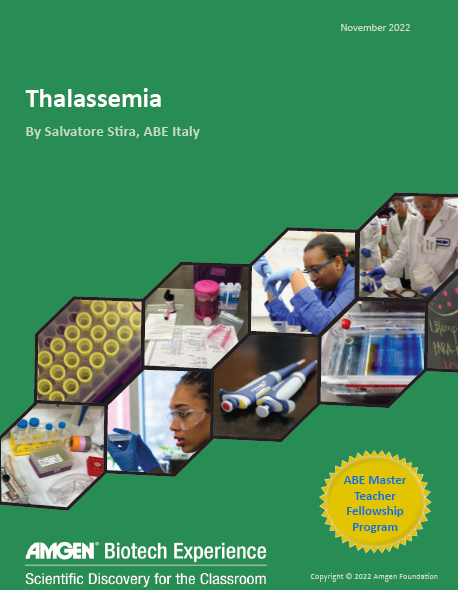
In this lesson, students deepen their understanding of the relationship between scientific research in modern biology and medicine by studying the genetic basis of thalassemia, a form of hereditary anemia quite widespread in all Mediterranean countries.
Students are asked to investigate through active teaching methods the gene mutations that cause alpha and beta thalassemia using bioinformatics tools, LabXchange, and practical activities with active participation of students, through the inquiry-based methods.
They will explore the molecular biology methods—including restriction enzyme digestion, PCR, and DNA electrophoresis—that are used to detect this blood disease
Finally, evolutionary aspects of this disease and potential gene therapy techniques for thalassemia care are investigated, reflecting also on ethical issues.
These materials were developed by ABE Master Teacher Fellow Salvatore Stira of ABE Italy as part of the ABE Master Teacher Fellowship.
| Class sessions |
15 |
|---|---|
| Files |
Document
|
| Resource Type |
Teaching Materials
Classroom-based
|
| Appropriate Ages |
Upper Secondary
|
| Resource Topic |
Biotech & Medicine
Human Disease
Biotech & Society
Bioethics
Data Science
Bioinformatics
Lab Techniques
Gel Electrophoresis
PCR
Pipetting
Restriction Enzyme
|
| Resource Author |